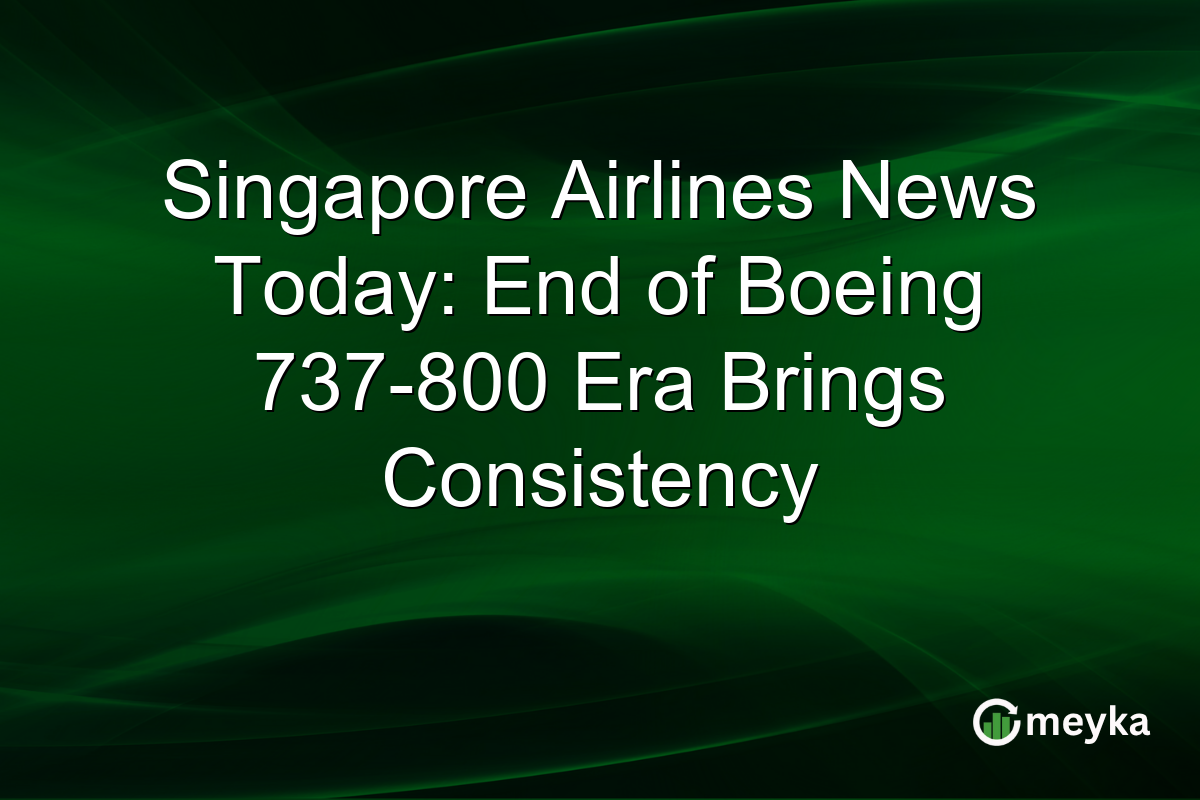Singapore Airlines News Today: End of Boeing 737-800 Era Brings Consistency
Singapore Airlines is set to retire its final Boeing 737-800, marking a significant transformation in its fleet strategy. The shift to a consistent fleet with newer aircraft brings notable benefits for passengers and the airline alike.
Final Farewell to Boeing 737-800
Singapore Airlines’ decision to retire the Boeing 737-800 marks the end of an era. This move aligns with the airline’s strategy to modernize and unify its fleet. The Boeing 737-800 has been a part of the airline since 1999, serving millions of passengers. As part of modern aviation, these older planes are being replaced by the newer Boeing 737 MAX 8 models.
By transitioning to the MAX 8, Singapore Airlines aims to enhance its operational efficiency. Newer aircraft require less maintenance, have better fuel efficiency, and offer improved environmental performance. This not only reduces costs but also aligns with global sustainability trends.
Enhanced Passenger Experience
With the introduction of the Boeing 737 MAX 8, Singapore Airlines is focusing on passenger comfort. These aircraft feature fully flat bed seats, allowing for a significantly more comfortable travel experience, especially on long-haul flights. Such features enhance the premium travel experience that Singapore Airlines is known for.
Additionally, the MAX 8 offers upgraded inflight Wi-Fi, keeping passengers connected like never before. This move towards enhanced connectivity is crucial in today’s digital age, meeting the expectations of tech-savvy travelers.
Competitive Positioning and Market Impact
This fleet transition is a strategic move to strengthen Singapore Airlines’ market position. By offering modern amenities like flat bed seats and inflight Wi-Fi, the airline enhances its appeal to business travelers and long-distance flyers.
For the airline industry, offering a consistent product improves brand loyalty and customer satisfaction. Singapore Airlines’ focus on consistency across its fleet ensures travelers receive a predictable and premium experience. This consistency is vital in maintaining competitive edge in a saturated market.
Final Thoughts
In summary, Singapore Airlines’ retirement of the Boeing 737-800 and transition to the newer Boeing 737 MAX 8 models represents a strategic advancement for the airline. By offering flat bed seats and improved inflight Wi-Fi, the airline enhances passenger comfort and aligns with modern travel demands. This transition is a clear marker of Singapore Airlines’ commitment to remaining a top choice for global travelers.
For passengers and stakeholders, this modernization reflects the airline’s focus on delivering exceptional service. Such initiatives help maintain its reputation as a leading global airline, ensuring continued growth and success in the competitive aviation market.
Stay updated with more insights at Meyka, where real-time financial insights and predictive analytics keep you ahead in the investment world.
FAQs
Singapore Airlines is retiring the Boeing 737-800 to modernize and unify its fleet with newer, more efficient aircraft. This transition reduces maintenance costs and enhances the passenger experience with improved amenities.
The Boeing 737 MAX 8 offers fully flat bed seats and enhanced inflight Wi-Fi, providing a more comfortable and connected experience for passengers, particularly on long-haul flights.
By aligning its fleet with the Boeing 737 MAX 8, Singapore Airlines improves operational efficiency and competitiveness. This consistency in aircraft offerings strengthens passenger satisfaction and loyalty.
Disclaimer:
This is for information only, not financial advice. Always do your research.






